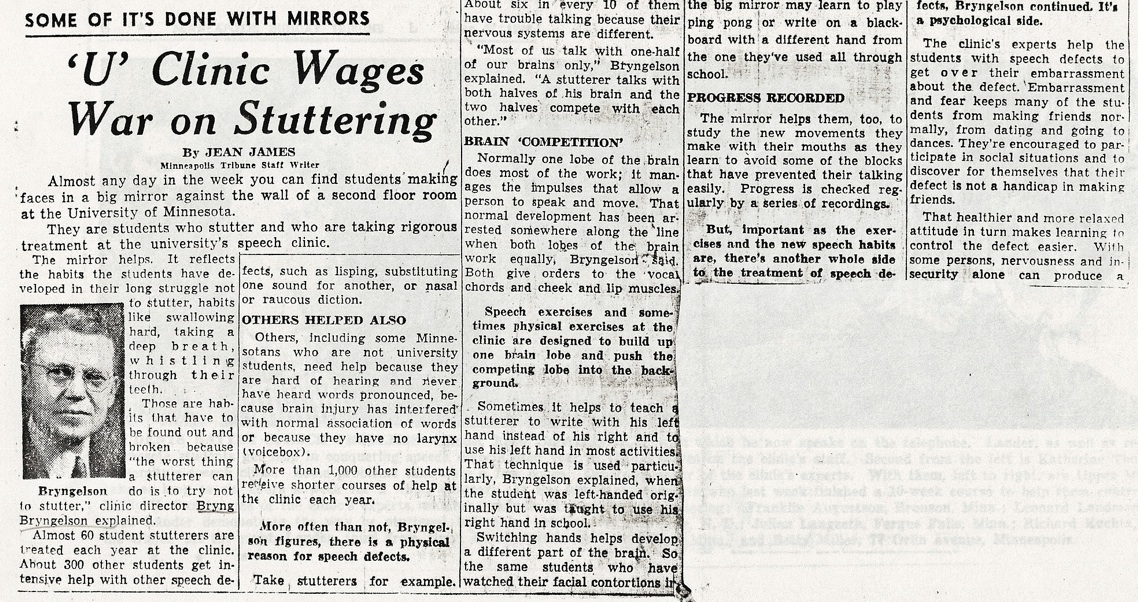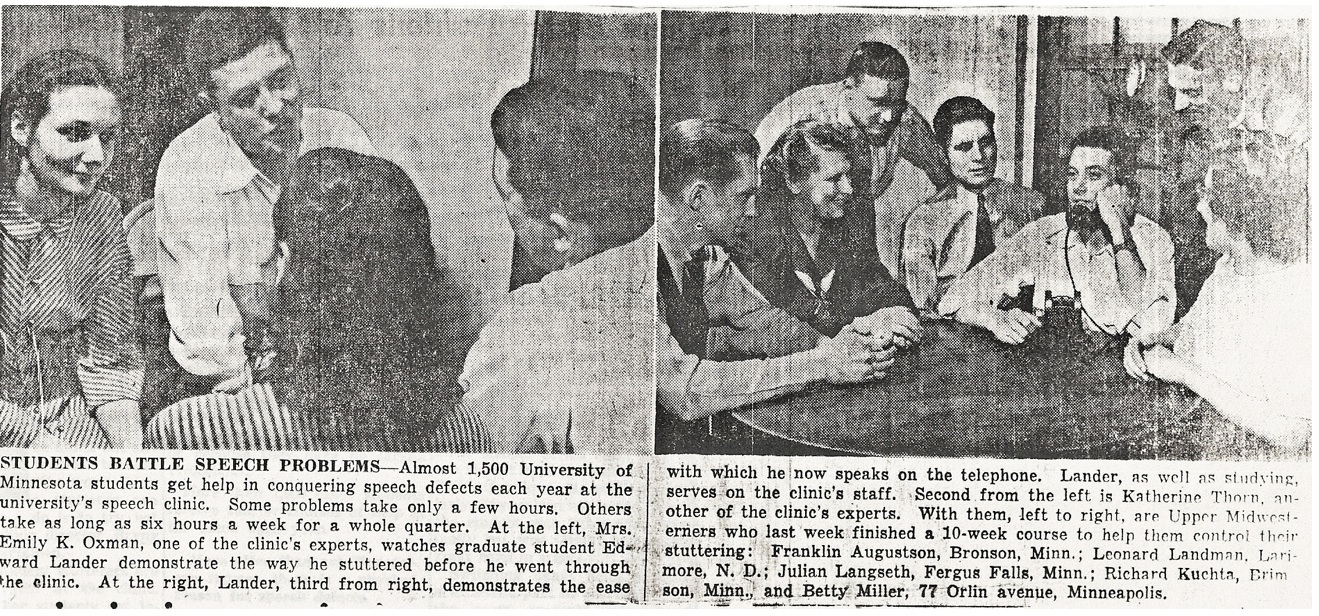Various Newspaper Articles Featuring Bryng Bryngelson
The following newspaper articles featuring Bryng Bryngelson were sent to be added here by Lorie Bryngelson whose great uncle was Bryngelson.
Seattle Daily Times, Nov. 27, 1972
"As one of 'those people'--the one in ten who is lefthanded--it was encouraging to learn that Dr. Bryng Bryngelson, University of Minnesota speech pathologist, has spent 40 years studying the problem.
Some of his findings:
- Handedness is just one sign of a person's sidedness. Eyedness, earness, footedness, whorls and palm patterns are others.
- Frequently one's dominant eye is not on the same side as his dominant hand.
- If children were allowed to grow up in a neutral environment, 34 percent in this country would develop as lefthanders and 3 percent would be ambidextrous (equally facile with either hand).
- Although a righthander himself, Dr. Bryngelson persuaded the University of Minnesota to install more lefthanded desks. He also invented the 'pull method' of writing for lefthanders--teaching lefties to turn their paper to the right and hold their left hands below the line, thus avoiding the contortions many of us go through to avoid rubbing our hands across what we have written.
- The pathologist once watched Babe Ruth, who batted lefthanded, hit five home runs in one game during a double header in New York. He ran onto the baseball field between games and asked if he could test Ruth for eyedness. The Babe agreed. Dr. Bryngelson found that although Ruth was lefthanded his right eye was dominant.
We too shall overcome!"
"Film shows results of professor's work with stutterers in U clinic"
Minneapolis newspaper, 1974
One stutterer walked into a bookstore and deliberately asked to buy groceries. Others learned to tell stuttering jokes. It was all part of treatment to correct their speech problems, Professor Emeritus Bryng Bryngelson, founder of the University's speech and hearing clinic in 1927 and director until 1952, said.
Bryngelson, 82, has completed a film, to be shown at 3:10 p.m. today in Mayo Auditorium, presenting the results of his work with five stutterers. Bryngelson said that stutterers were put into difficult situations so they would admit and face their problem. Patients would look into a mirror to study and imitate their own speech patterns, he added.
Group therapy was an important part of treatment, Bryngelson said. Stutterers participated in critical rap sessions, forcing themselves to speak when angry.
"A sense of humor is very important," Bryngelson added, "to get people to laugh with them instead of laughing at them."
Bryngelson said that sending the person home was an acid-test of the treatment. "That's the hardest situation for them to come to," he said, because of constant correction and criticism by teachers and parents and chiding by peers. Parents will tell a stuttering child to slow down and repeat the phrase, Bryngelson said; but the child will stutter each time because the mental block still remains.
The movie, Speech of Stutterers Before and After Treatment, follows the progress of five stutterers, ranging in age from 19 to 33, who underwent treatment at the clinic in 1949. After the treatment, which ran seven hours each day for eight weeks, the patients returned one month later, returned again in 1952, 1957 and finally in 1972 to speak for the film. After the 23-year period without additional treatment, Bryngelson said, the patients spoke as well as they did immediately after treatment.
Bryngelson said that he suspects stuttering is caused by a physical trait of the brain, although relatively little is known about the nature of the physical disorder. He criticized theories of stuttering, assumed to be true 40 years ago. "We don't have the answers now, but we're asking questions," he added.
A disproportionately high number of stutterers are left-handed, according to Bryngelson. It was once thought that the "emotional turmoil" of forcing a left-handed child to become right-handed could cause stuttering, but recent studies cast doubt on this theory, he said. He said that various studies have indicated a correlation between stuttering and being a twin, bedwetting, being cross-eyed and being delinquent.
"Stuttering comes in for more abuse in our culture," he said, adding that the harassment often damages the personality of the stutterer, compounding the speech problem. According to Bryngelson, stutterers often choose a job where talking isn't necessary, and often avoid social involvement. Stutterers have a higher than normal suicide rate, he said.
Bryngelson said that a fundamental aim of his program was to help stutterers admit their problem and learn why they have it. "Our goal," he said, "was to make them their own clinicians for their own problems."
Bryngelson and U of M in the News



